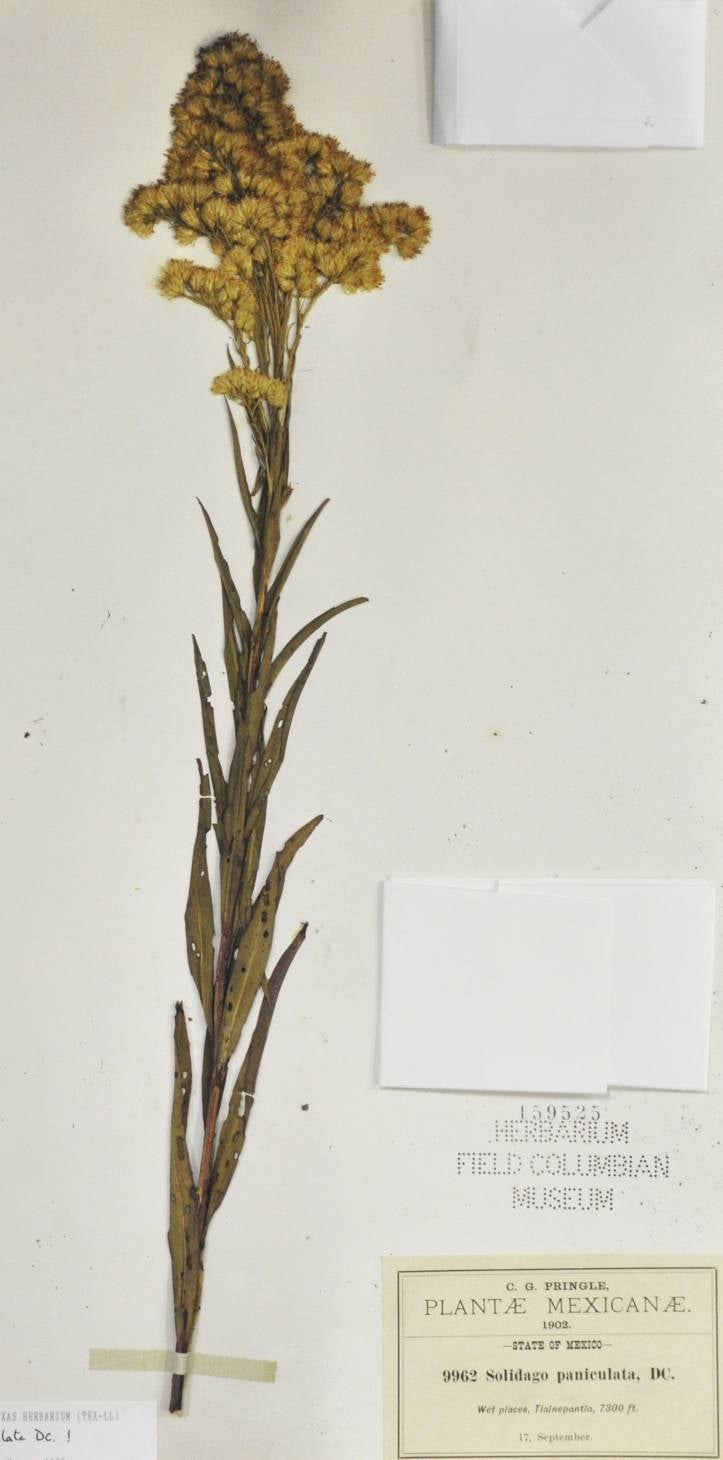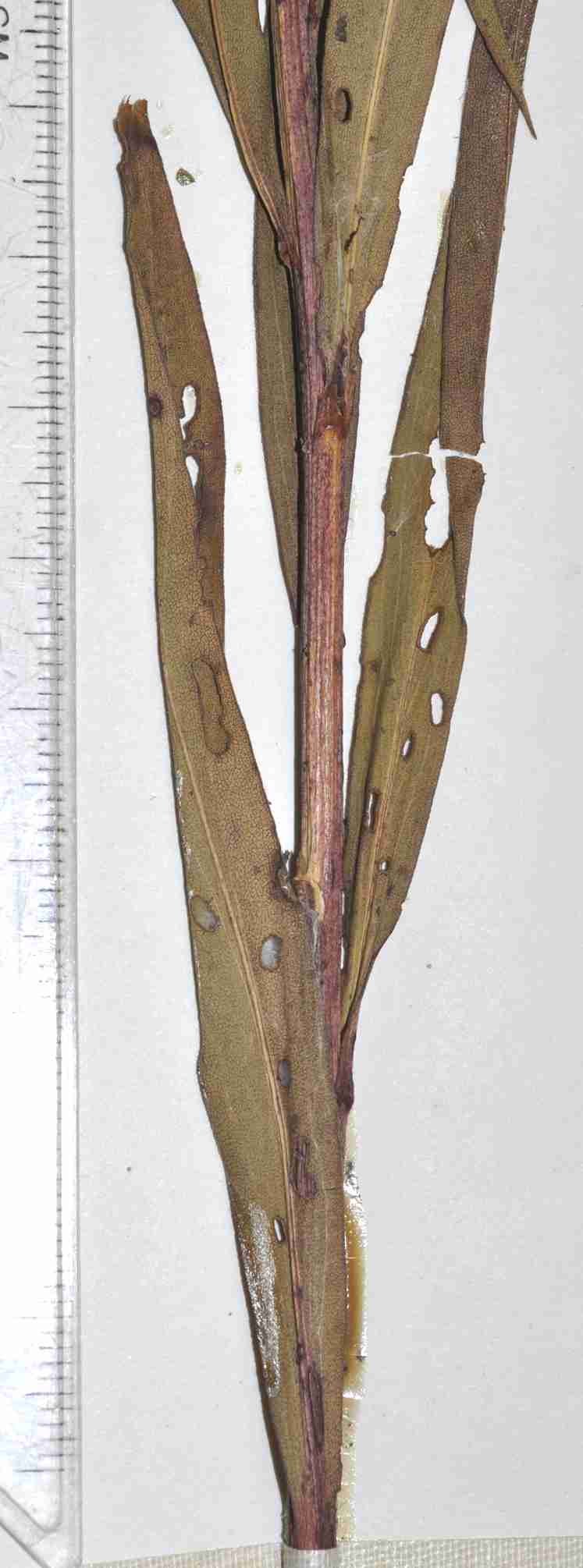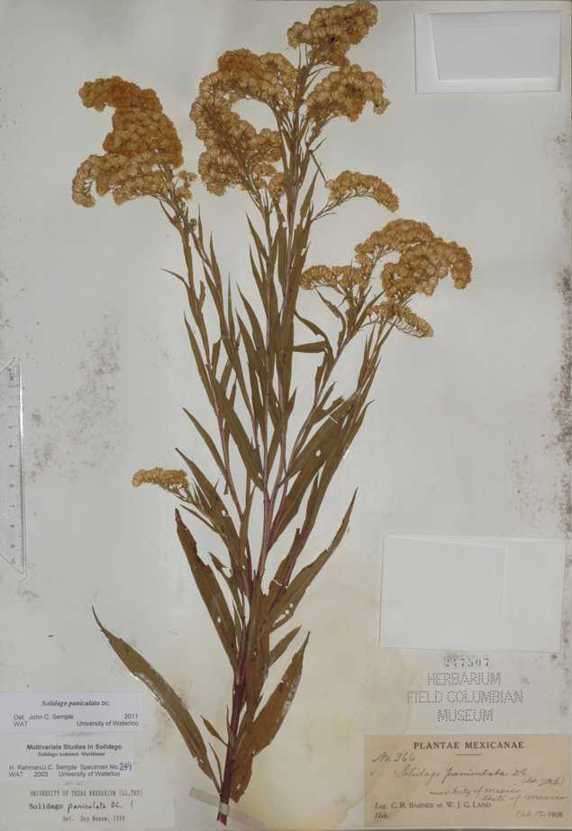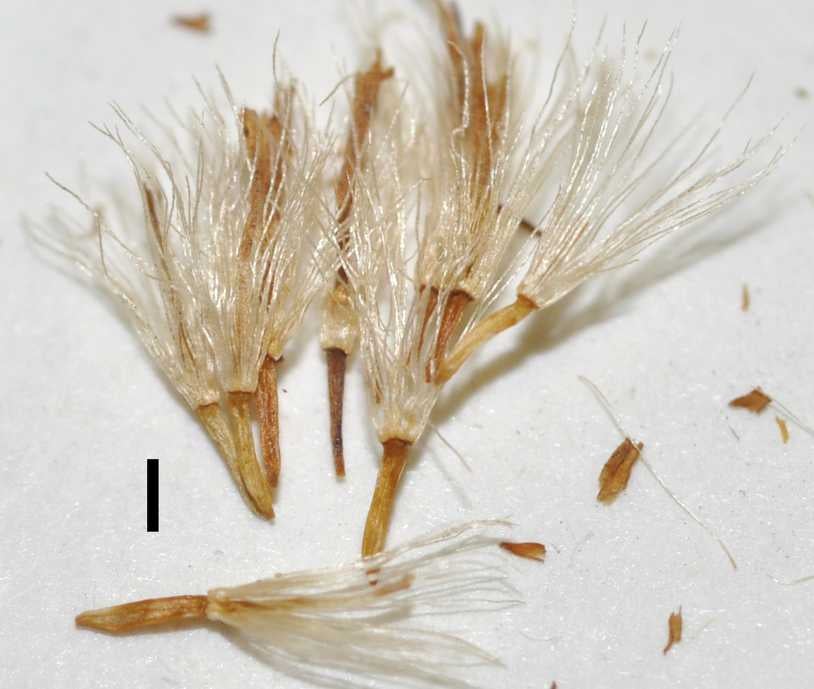Solidago paniculata DC. is native to marshy areas around México City and further west. Rzedowski (1985) thought this species might be extinct due to expansion of México City. There are a number of collections of the species from Michoacán made in the 1980s at MEXU. These collections include lower stems and rhizomes, but no lower stem or basal rosette leaves. Petiole scars indicate the lower leaves sheath the stem as in other species of sect. Maritimae.
Stems and leaves are glabrous. The inflorescence varies from compact secund pyramidal to larger more open forms with ascending-arching branches terminated by compact secund pyramidal arrays of heads. The species is probably related to S. mexicana. The species was included in several multivariate studies. Semple et al. (2016a) and Semple et al. (2016b) indicated that the species was not similar to S. durangensis of subsect. Triplinerviae, but was similar to members of the S. sempervirens complex of subsect. Maritimae.
No chromosome number has been reported for the species.
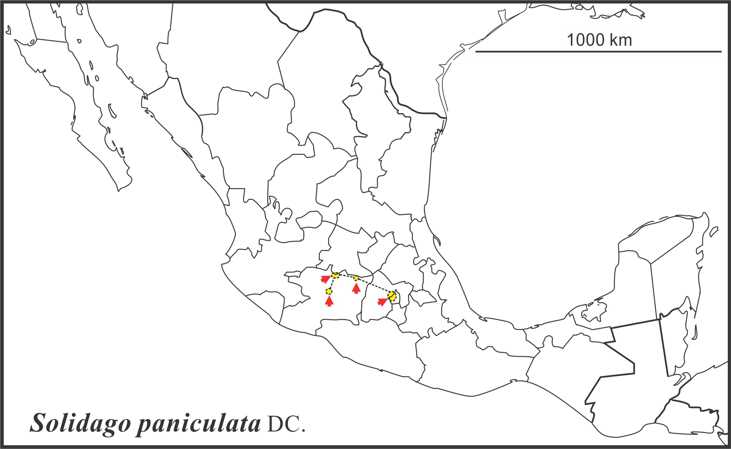
Semple, J.C., R. Lopez Laphitz, H. Rahman, and Yunfei Ma. 016. On Solidago durangensis (Asteraceae: Astereae): a multivariate study with specimens of S. subsect. Junceae, S. subsect. Maritimae, and S. subsect. Triplinerviae. Phytoneuron 2016-49: 1–19.
Semple, J.C., T. Shea, H. Rahman, Y. Ma, and K. Kornobis. 2016. A multivariate study of the Solidago sempervirens complex (Asteraceae: Astereae: S. subsect. Maritimae). Phytoneuron 2016-73. 1-31.
Last revised 19 May 2025 by J.C. Semple
© 2025 J.C. Semple, including all photographs unless otherwise indicated.
1-6. Solidago paniculata. 1. Upper portion of shoot, Pringle 9962 F, Mexico City. 2. Rhizome, MacDaniels 611 F. 3. Upper mid-stem leaves, Pringle 9965 F. 4. Inflorescence, Orcutt 4364 F. 5. Heads, Pringle 9962 F. 6. Fruits, Pringle 9962 F.






